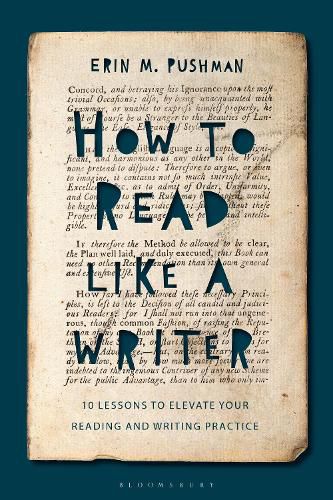Readings Newsletter
Become a Readings Member to make your shopping experience even easier.
Sign in or sign up for free!
You’re not far away from qualifying for FREE standard shipping within Australia
You’ve qualified for FREE standard shipping within Australia
The cart is loading…






Reliably insightful. - Publishers Weekly
The first step to becoming a successful writer is to become a successful reader. Helping you develop your critical skills How to Read Like a Writer is an accessible and effective step-by-step guide to how careful reading can help you improve your craft as a creative writer, whatever genre you are writing in.
Across 10 lessons - each pairing published readings with practical critical and creative exercises - this book helps writers master such key elements of their craft as:
*
Genre - from fiction, creative nonfiction and poetry to hybrid genres such as graphic narratives and online forms *
Plot, conflict, theme and image *
Developing characters - physical descriptions, psychological depths and actions *
Narrators and points of view - 1st, 2nd and 3rd person narratives *
Scenes and settings - time, space and place *
Structure and form - length, organization and media *
Language, subtext and style
$9.00 standard shipping within Australia
FREE standard shipping within Australia for orders over $100.00
Express & International shipping calculated at checkout
Reliably insightful. - Publishers Weekly
The first step to becoming a successful writer is to become a successful reader. Helping you develop your critical skills How to Read Like a Writer is an accessible and effective step-by-step guide to how careful reading can help you improve your craft as a creative writer, whatever genre you are writing in.
Across 10 lessons - each pairing published readings with practical critical and creative exercises - this book helps writers master such key elements of their craft as:
*
Genre - from fiction, creative nonfiction and poetry to hybrid genres such as graphic narratives and online forms *
Plot, conflict, theme and image *
Developing characters - physical descriptions, psychological depths and actions *
Narrators and points of view - 1st, 2nd and 3rd person narratives *
Scenes and settings - time, space and place *
Structure and form - length, organization and media *
Language, subtext and style